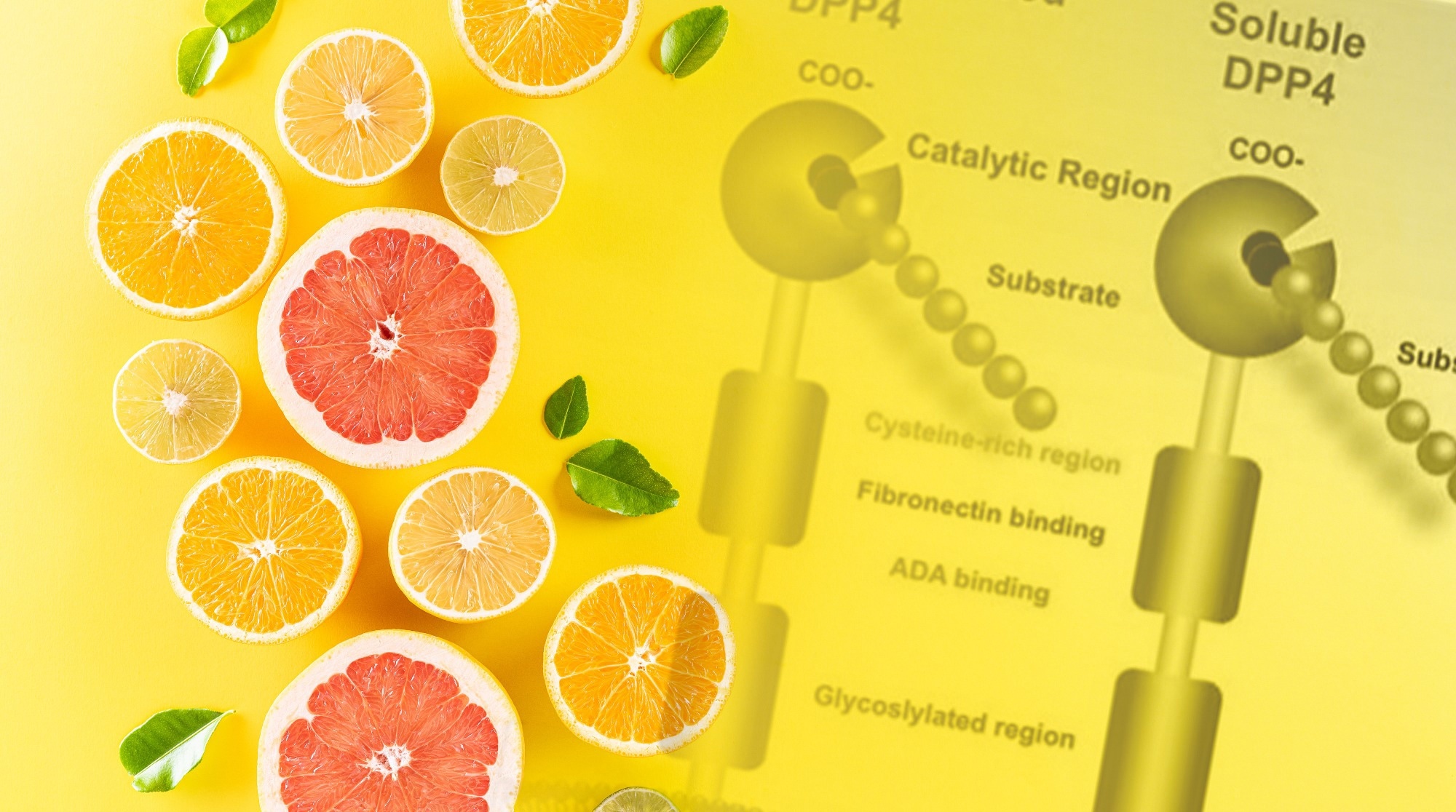In a systematic review published in the journal Diabetes & Metabolic Syndrome: Clinical Research & Reviews, authors have described the therapeutic potency of citrus bioflavonoids in controlling blood glucose levels and metabolic complications in patients with type 2 diabetes.
 Study: A systematic review exploring the mechanisms by which citrus bioflavonoid supplementation benefits blood glucose levels and metabolic complications in type 2 diabetes mellitus. Image Credit: siam.pukkato / Shutterstock
Study: A systematic review exploring the mechanisms by which citrus bioflavonoid supplementation benefits blood glucose levels and metabolic complications in type 2 diabetes mellitus. Image Credit: siam.pukkato / Shutterstock
Background
With an ever-increasing prevalence, type 2 diabetes has become a significant public health concern worldwide. The condition is characterized by reduced insulin secretion or sensitivity, impaired glycemic control, and metabolic complications. Type 2 diabetes increases the risk of developing microvascular and macrovascular complications, ultimately leading to organ failure.
Persistently high blood glucose levels (hyperglycemia) and insulin resistance related to diabetes trigger the generation of free radicals and inflammatory mediators, which collectively result in the development of various complications, including nerve damage, cardiovascular, liver, kidney, and eye damage, skin conditions, hearing impairments, and neurodegenerative disorders.
Metformin and sulfonylureas are the first line of treatments against diabetes and its complications. The second line of treatments includes glucagon-like peptide-1 (GLP-1) receptor (GLP-1R) agonists and dipeptidyl peptidase-4 (DPP-4) inhibitors.
Citrus bioflavonoids (flavonols and flavanones) are organic polyphenolic compounds mainly derived from citrus fruits (lemon, orange, and grapefruit) and vegetables. These compounds are known to have strong antioxidant properties that help reduce oxidative stress and inflammation.
In this systematic review, authors searched various scientific databases to select relevant studies that were conducted between January 2012 and February 2023. The final screening identified 129 studies on diabetes management by citrus bioflavonoids.
Therapeutic potency of citrus bioflavonoids in type 2 diabetes
Inflammation and oxidative stress are the major hallmarks of type 2 diabetes. Excessive generation of reactive oxygen species (ROS) through mitochondrial and endoplasmic reticulum (ER) pathways negatively affects the body’s antioxidant defense system, leading to oxidative damage of proteins, lipids, enzymes, and other cellular components. These factors are collectively associated with insulin resistance and persistent hyperglycemia.
Hyperglycemia management
Citrus bioflavonoids with potent antioxidant properties are known to control blood glucose levels through various pathways. These compounds, especially naringin and hesperidin, have been found to inhibit starch hydrolyzing enzymes (alpha-amylase and alpha-glucosidase) and glucose transporters (GLUT2) to reduce carbohydrate digestion and absorption in the intestine, which in turn lead to a reduction of glucose release into the bloodstream and attenuation of postprandial hyperglycemia.
Among starch hydrolyzing enzymes, alpha-amylase breaks down ingested starch to generate maltodextrins, which are subsequently converted into glucose by the intestinal brush border enzyme alpha-glucosidase. Thus, the inhibition of these enzymes by citrus bioflavonoids helps prevent hyperglycemia.
Glucose transporters play vital roles in absorbing glucose and fructose from the small intestine into the bloodstream. Evidence indicates that hesperidin 1, hesperetin 8, and whole orange juice can significantly inhibit glucose transporters, including GLUT2, SGLT1, and GLUT5. However, poor solubility of isolated bioflavonoids, such as hesperidin 1, in water and other solvents can limit their bioavailability and bioactivity.
Being an important metabolic organ, the liver plays a vital role in maintaining blood glucose balance by regulating various metabolic pathways, including gluconeogenesis, glycogenolysis, and glycolysis.
Evidence indicates that citrus bioflavonoids control hepatic glucose metabolism by increasing glucokinase activity and decreasing phosphoenolpyruvate carboxykinase and glucose-6-phosphatase activities. Specifically, hesperidin 1, neohesperidin 4, naringin 6, and nobiletin 13 have been found to stimulate glycolysis, increase glycogen levels, and reduce gluconeogenesis in liver cells by modulating various hepatic enzymes. These effects are similar to those caused by metformin, a well-established anti-diabetic medicine.
Several animal studies have reported a positive impact of hesperidin in reducing total cholesterol, triglyceride, and low-density lipoprotein levels in the blood. However, this compound fails to show any beneficial effects in human clinical trials. In this context, it should be noted that despite the considerable therapeutic impact on hepatic glucose metabolism, the poor bioavailability of citrus bioflavonoids in the circulation raises a concern over their physiological relevance.
Insulin resistance management
Insulin, a hormone secreted by pancreatic beta cells, is primarily responsible for regulating blood glucose levels. A grapefruit-derived flavonoid, naringenin, has been found to increase insulin secretion from pancreatic beta cells in response to glucose. In a mouse model of gestational diabetes, this flavonoid has been found to improve insulin and glucose levels and restore normal body weight.
In diabetic rats, Citrus sinensis (L.) Osbeck peel extract has been found to reduce insulin resistance by upregulating expressions of peroxisome proliferator-activated receptor gamma (PPAR-γ), GLUT4, and insulin receptors. In diabetic patients, hesperidin supplementation has been found to significantly reduce fasting blood glucose and glycated hemoglobin levels and increase blood insulin levels. Studies investigating the mode of action of citrus flavonoids have shown that these compounds increase insulin sensitivity by modulating various signaling pathways, including the PI3K/Akt, PKA, and AMPK pathways.
Inhibition of DPP-4
Recent evidence indicates that citrus bioflavonoids can act as potential DPP-4 inhibitors. In a study, hesperetin 8 and naringenin 9 have shown a 15-fold higher ability to inhibit DPP-4 activity than a potent DPP inhibitor diprotin A.
Management of diabetes-related complications
Quercetin, a citrus flavonol, has been found to prevent the development of diabetic nephropathy (kidney complication) in mice by reducing lipid peroxidation, increasing antioxidant activity, inhibiting GLUT2, and suppressing insulin-dependent activation of PI3K.
In diabetic patients, supplementation of quercetin three times a day for four weeks has been found to significantly ameliorate the symptoms of diabetic neuropathy (nerve damage). In diabetic rats, hesperidin has been found to reduce diabetic retinopathy (eye damage) by reducing retinal inflammation, preserving the blood-retinal barrier, increasing retina thickness, and reducing blood glucose level and aldose reductase activity.
Source link
credite
